Geoff Nicholson's Blog, page 41
November 9, 2017
ENOUGH WALKING

I was walking in Berkeley and I sat down at the Pane Italiano Qualita to have a sandwich; this one, a bit heavy on the tomato, decidedly light on the prosciutto.

And as I was sitting there, two people came in – an old lady and a middle-aged man, mother and son I’m pretty sure, though I couldn’t prove that. And the old lady said to her son, “I’m not walking as well as I used to.” And the son said, “OK, but are you walking enough?”
This raised some questions. Obviously there’s a basic one about what does it mean to walk “well” – I suppose painlessly, without getting tired, without any danger of falling over. Also perhaps a question of just how well she used to walk.And then the question of how much walking is enough, a matter of quantity versus quality. Some of us tend to think that walking is in itself a virtue, but maybe the son was suggesting that it only became a virtue after you'd done a certain amount of it. Or maybe he was suggesting that if she did more of it she’d become "better" at it.
The conversation didn’t get that far. The old lady didn’t bother to answer him. Maybe it wasn’t really a question.


Published on November 09, 2017 10:57
November 1, 2017
OF WALKING AND PLUGGING
I did this for "Electric Literature"
You can see at their website, along with much other fine stuff
https://electricliterature.com/9-walking-books-that-let-you-follow-in-literary-footsteps-3880d1eaaaa4
*

9 Walking Books That Let You Follow in Literary Footsteps
From Dublin to Panama to your own backyard, these books lay out a path for walking around the worldMy new novel The Miranda features a lead character who wants to walk around the world but doesn’t want to leave his own backyard, so he decides to walk 25,000 miles — the circumference of the earth — by doing laps around his own garden path. However, his sinister professional past proves difficult to walk away from.
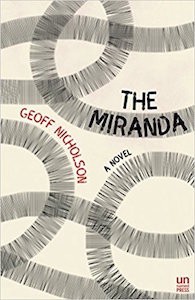
I join a very long line of writers who have walked, and walkers who have written. I’m not in competition with my predecessors, either as a writer or as a walker, but here are some works by a few of my favorite literary fellow travelers. Some of these are fiction, some non-fiction—although all the fiction contains autobiographical elements, and there’s considerable invention in all the memoir.
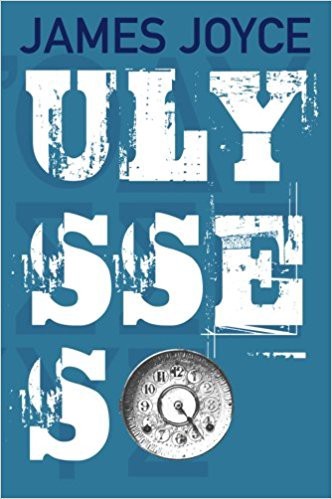
Dublin: Ulysses, James JoyceAn obvious one to start with: the novel follows Leopold Bloom and Stephen Dedalus as they spend a day wandering around Dublin, pursuing their separate, then crossed, destinies. There are endless books, guides, maps, organized walking tours to help you follow the characters’ routes in the real world. And the great thing is that any of these walks can easily be turned into a pub crawl. Ulysses also contains what I think is one of the truly great statements about walking: “We walk through ourselves, meeting robbers, ghosts, giants, old men, young men, wives, widows, brothers-in-law. But always meeting ourselves.”
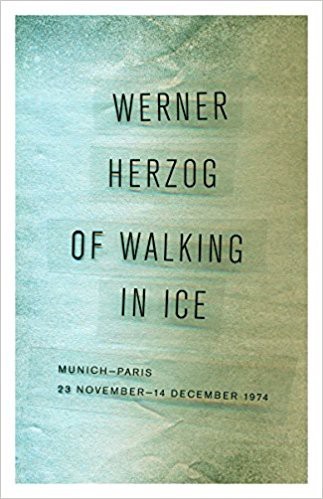
Munich to Paris: Of Walking In Ice, Werner HerzogIn the winter of 1974, Herzog walked the 500-plus miles from Munich to Paris in the firm belief that this walking pilgrimage would save the life of his friend, the film historian and critic Lotte Eisner, allegedly suffering from a serious illness. The walk was as arduous as you might expect, tramping through snow, sleeping in abandoned buildings, and Herzog is his usual heroically gloomy self. But the surprising thing is (or maybe we shouldn’t be surprised at all) — it worked. Lotte Eisner lived for another decade.
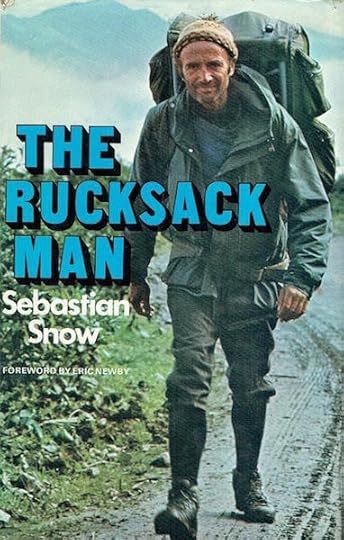
Tierra del Fuego to Panama: The Rucksack Man, Sebastian SnowThey don’t make ’em like Sebastian Snow anymore, and they never made many. Rejected from the army because of a knee injury incurred playing school sports, he became one of the twentieth century’s most relentless and eccentric world travelers. The Rucksack Man is his account of walking 8,700-miles from Tierra del Fuego to Panama, along the way getting his contact lenses fused to his eye balls, being bitten by a vampire bat, and having the amazing strength of character to refuse the many lifts he was offered.
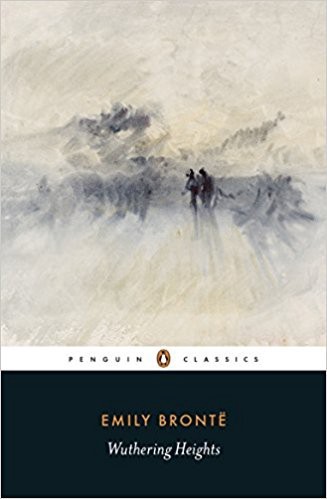
Yorkshire moors: Wuthering Heights, Emily BronteThe title is the name of an isolated farmhouse in the wilds of the Yorkshire Moors, the home of Heathcliff. It’s a long way from anywhere and yet the characters rarely think twice about walking the considerable distances there and back, and even a heavy snowfall only deters them slightly. Admittedly these journeys are sometimes necessary to further the plot, and of course the servants do at least twice as much walking as the property-owning classes.
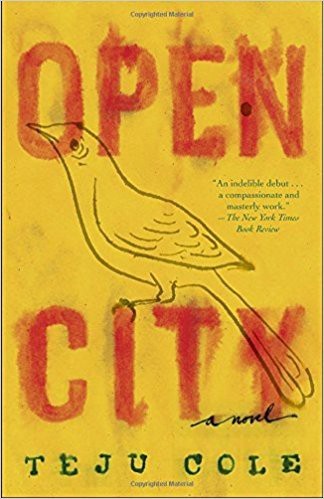
New York: Open City, Teju ColeJulius, a Nigerian student in New York, walks around Manhattan, explores the city, and tries to forget about the girlfriend he’s recently broken up with, observing the present while remembering his past in Nigeria and Belgium. This strikes me as one of the best aspects of walking: it requires you to pay attention to where you are and where you’re going, but because walking is also partly automatic, it leaves the walker’s mind free to set off in other directions.
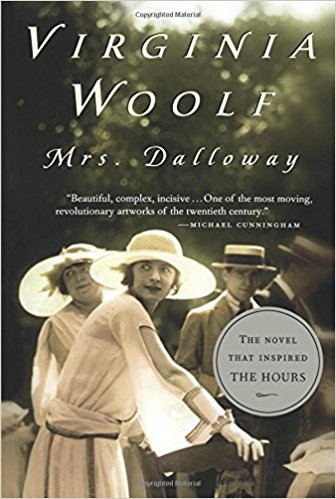
London: Mrs. Dalloway, Virginia WoolfIt would be more or less possible to track the route that Clarissa Dalloway takes — Westminster, St James Park, Piccadilly, Bond Street — as she sets out to buy flowers for a party she’s having in the evening. Like Teju Cole above, she too takes the opportunity to think about her current life and the missed opportunities of her past. For those seeking to replicate Mrs. Dalloway’s ramble, however, the route may be problematic. Critic and contrarian John Sutherland suggests that she couldn’t possibly have done the walk in the time available unless she’d taken a taxi.
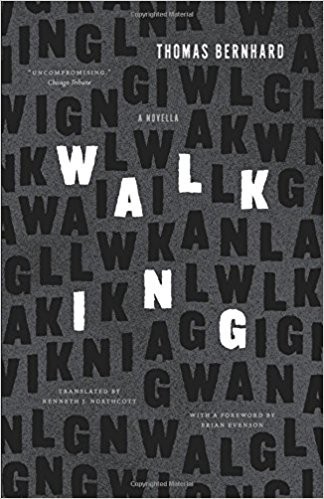
Vienna: Walking, Thomas BernhardTwo men habitually go on long walks through the streets of Vienna and have intense philosophical discussions, often about the nature of walking and the nature of thinking. But since Bernhard is one of history’s greatest misanthropes, the conversation inevitably turns to the evils of the Austrian state, madness, suicide, and a hatred for children. It is, of course, a comedy.
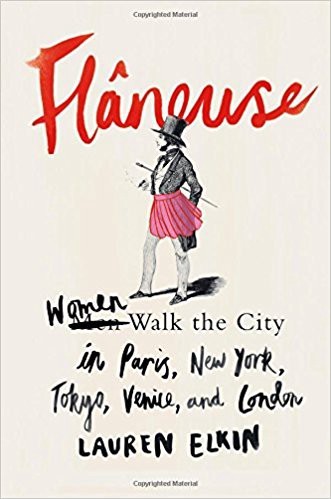
Paris, New York, Tokyo, Venice, and London: Flâneuse, Lauren ElkinFor all-too-obvious reasons, women walk much more cautiously than men, but there are plenty of serious women walkers, and Elkin’s book could be a sacred text for them. One of my favorite parts is her description of living in Tokyo, where she didn’t have the very best time. “What bothered me most was the certainty I felt that there was a great city out there full of places I wanted to discover, but I didn’t know where to look for them … I didn’t know where to go, where to walk.” A problem all walkers sometimes have.
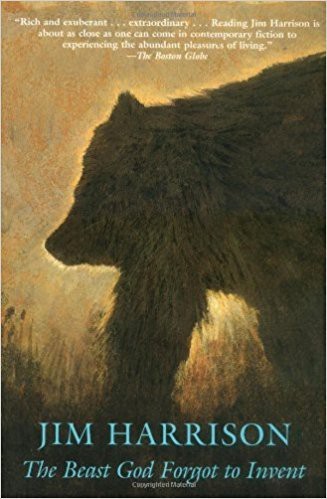
Los Angeles: Westward Ho, Jim HarrisonA rarity, a Los Angeles walking story, and a novella rather than a novel, about Brown Dog, a native American, who walks the 47 miles from Cucamonga to Westwood to reclaim a bearskin taken from him by a “deeply fraudulent Indian activist.” It takes him a “leisurely” thirty-six hours to cover the distance. Google maps clocks it as 51.7 miles, and although the walk looks perfectly doable, I imagine very, very few people have ever done it.
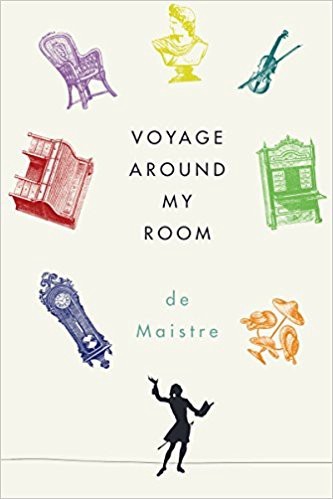
Inside the house: Voyage Around My Room, Xavier de MaistreAnd here’s one for those who want to walk but can’t to go anywhere. In 1790 de Maistre, a French aristocrat and army officer, was sentenced to forty-two days under house arrest for the crime of dueling. For those forty-two days he walked the length and breadth of his own room, treating it like a strange, newly discovered land, seeing it with new eyes, and also creating a parody of travel writing that is still extremely resonant.

About the Author
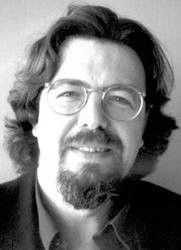
Geoff Nicholson is the acclaimed author of The City Under the Skin, Bleeding London, Bedlam Burning, and the cult classic Footsucker, among many others. His journalism has appeared in many periodicals as varied as GQ, The New York Times, Bookforum, Art Review, the London Daily Telegraph, the Guardian, and McSweeney’s. The Miranda is his most recent novel.


You can see at their website, along with much other fine stuff
https://electricliterature.com/9-walking-books-that-let-you-follow-in-literary-footsteps-3880d1eaaaa4
*

9 Walking Books That Let You Follow in Literary Footsteps
From Dublin to Panama to your own backyard, these books lay out a path for walking around the worldMy new novel The Miranda features a lead character who wants to walk around the world but doesn’t want to leave his own backyard, so he decides to walk 25,000 miles — the circumference of the earth — by doing laps around his own garden path. However, his sinister professional past proves difficult to walk away from.

I join a very long line of writers who have walked, and walkers who have written. I’m not in competition with my predecessors, either as a writer or as a walker, but here are some works by a few of my favorite literary fellow travelers. Some of these are fiction, some non-fiction—although all the fiction contains autobiographical elements, and there’s considerable invention in all the memoir.

Dublin: Ulysses, James JoyceAn obvious one to start with: the novel follows Leopold Bloom and Stephen Dedalus as they spend a day wandering around Dublin, pursuing their separate, then crossed, destinies. There are endless books, guides, maps, organized walking tours to help you follow the characters’ routes in the real world. And the great thing is that any of these walks can easily be turned into a pub crawl. Ulysses also contains what I think is one of the truly great statements about walking: “We walk through ourselves, meeting robbers, ghosts, giants, old men, young men, wives, widows, brothers-in-law. But always meeting ourselves.”

Munich to Paris: Of Walking In Ice, Werner HerzogIn the winter of 1974, Herzog walked the 500-plus miles from Munich to Paris in the firm belief that this walking pilgrimage would save the life of his friend, the film historian and critic Lotte Eisner, allegedly suffering from a serious illness. The walk was as arduous as you might expect, tramping through snow, sleeping in abandoned buildings, and Herzog is his usual heroically gloomy self. But the surprising thing is (or maybe we shouldn’t be surprised at all) — it worked. Lotte Eisner lived for another decade.

Tierra del Fuego to Panama: The Rucksack Man, Sebastian SnowThey don’t make ’em like Sebastian Snow anymore, and they never made many. Rejected from the army because of a knee injury incurred playing school sports, he became one of the twentieth century’s most relentless and eccentric world travelers. The Rucksack Man is his account of walking 8,700-miles from Tierra del Fuego to Panama, along the way getting his contact lenses fused to his eye balls, being bitten by a vampire bat, and having the amazing strength of character to refuse the many lifts he was offered.

Yorkshire moors: Wuthering Heights, Emily BronteThe title is the name of an isolated farmhouse in the wilds of the Yorkshire Moors, the home of Heathcliff. It’s a long way from anywhere and yet the characters rarely think twice about walking the considerable distances there and back, and even a heavy snowfall only deters them slightly. Admittedly these journeys are sometimes necessary to further the plot, and of course the servants do at least twice as much walking as the property-owning classes.

New York: Open City, Teju ColeJulius, a Nigerian student in New York, walks around Manhattan, explores the city, and tries to forget about the girlfriend he’s recently broken up with, observing the present while remembering his past in Nigeria and Belgium. This strikes me as one of the best aspects of walking: it requires you to pay attention to where you are and where you’re going, but because walking is also partly automatic, it leaves the walker’s mind free to set off in other directions.

London: Mrs. Dalloway, Virginia WoolfIt would be more or less possible to track the route that Clarissa Dalloway takes — Westminster, St James Park, Piccadilly, Bond Street — as she sets out to buy flowers for a party she’s having in the evening. Like Teju Cole above, she too takes the opportunity to think about her current life and the missed opportunities of her past. For those seeking to replicate Mrs. Dalloway’s ramble, however, the route may be problematic. Critic and contrarian John Sutherland suggests that she couldn’t possibly have done the walk in the time available unless she’d taken a taxi.

Vienna: Walking, Thomas BernhardTwo men habitually go on long walks through the streets of Vienna and have intense philosophical discussions, often about the nature of walking and the nature of thinking. But since Bernhard is one of history’s greatest misanthropes, the conversation inevitably turns to the evils of the Austrian state, madness, suicide, and a hatred for children. It is, of course, a comedy.

Paris, New York, Tokyo, Venice, and London: Flâneuse, Lauren ElkinFor all-too-obvious reasons, women walk much more cautiously than men, but there are plenty of serious women walkers, and Elkin’s book could be a sacred text for them. One of my favorite parts is her description of living in Tokyo, where she didn’t have the very best time. “What bothered me most was the certainty I felt that there was a great city out there full of places I wanted to discover, but I didn’t know where to look for them … I didn’t know where to go, where to walk.” A problem all walkers sometimes have.

Los Angeles: Westward Ho, Jim HarrisonA rarity, a Los Angeles walking story, and a novella rather than a novel, about Brown Dog, a native American, who walks the 47 miles from Cucamonga to Westwood to reclaim a bearskin taken from him by a “deeply fraudulent Indian activist.” It takes him a “leisurely” thirty-six hours to cover the distance. Google maps clocks it as 51.7 miles, and although the walk looks perfectly doable, I imagine very, very few people have ever done it.

Inside the house: Voyage Around My Room, Xavier de MaistreAnd here’s one for those who want to walk but can’t to go anywhere. In 1790 de Maistre, a French aristocrat and army officer, was sentenced to forty-two days under house arrest for the crime of dueling. For those forty-two days he walked the length and breadth of his own room, treating it like a strange, newly discovered land, seeing it with new eyes, and also creating a parody of travel writing that is still extremely resonant.

About the Author

Geoff Nicholson is the acclaimed author of The City Under the Skin, Bleeding London, Bedlam Burning, and the cult classic Footsucker, among many others. His journalism has appeared in many periodicals as varied as GQ, The New York Times, Bookforum, Art Review, the London Daily Telegraph, the Guardian, and McSweeney’s. The Miranda is his most recent novel.


Published on November 01, 2017 08:05
October 25, 2017
WALKING WITH MUFFLERS
I walked past my favorite Mufflerman down on Santa Monica Boulevard. He’s been given a make over. He used to look like this:

Now he looks like this:

I’m not absolutely sure it’s an improvement but no doubt he’ll get made over again before too long.
Incidentally, should you care, Lashes Ska Ruh (the name on the mufflerman’s body in the second picture) is the name of a street artist. This is apparently her, on the couch, behind the bandana, keeping it real.
 SKA – stands for “still kicking ass,” and “suckers keep asking,” among other things.
SKA – stands for “still kicking ass,” and “suckers keep asking,” among other things.

Now he looks like this:

I’m not absolutely sure it’s an improvement but no doubt he’ll get made over again before too long.
Incidentally, should you care, Lashes Ska Ruh (the name on the mufflerman’s body in the second picture) is the name of a street artist. This is apparently her, on the couch, behind the bandana, keeping it real.
 SKA – stands for “still kicking ass,” and “suckers keep asking,” among other things.
SKA – stands for “still kicking ass,” and “suckers keep asking,” among other things.
Published on October 25, 2017 10:04
October 23, 2017
HOLLYWOOD FOR NOW

One thing that’s confirmed by a walk around the Hollywood Forever cemetery, down on Santa Monica Boulevard: there is no relation between the size of a person’s fame and the size of their memorial.
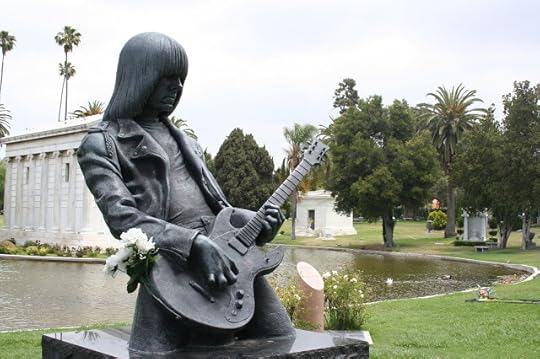
I mean I can, more or less, understand why there’s a large and very literal statue of Johnny Ramone. It strikes me as a strange and welcome splash of irony and subversion, though I’m never entirely sure if that’s intentional: irony and subversion are rather difficult to pull off in a graveyard. However, elsewhere in the cemetery is this headstone belonging to one Roman Kozlov:

Now, the internet reveals a few Roman Kozlovs, one of them is even a guitarist, but as far as I can tell, it’s not this one. So we note the man and his headstone, and assume he must have been a guitar aficionado of some kind, and that’s about it. We’re left remembering the headstone rather than the man. It piques your curiosity, even as it fails to satisfy it.
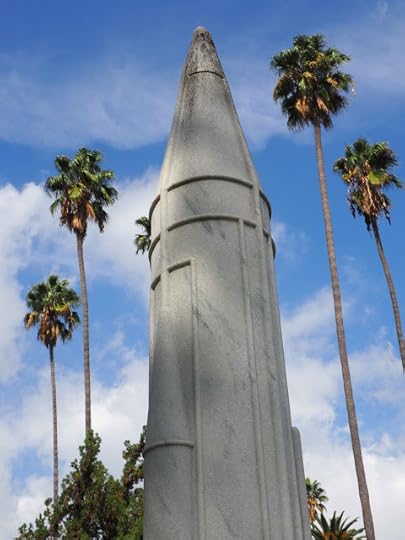
The thing that everybody notices at Hollywood Forever is the one in the shape of an Atlas rocket, the memorial for Carl Morgan Bigsby. It might lead you to think he had something to do with the space program, but apparently not. The monument says Bigsby was “a recognized leader in many phases of the graphic arts,” a pioneer, just like the Atlas rocket, suggesting that we’re dealing with a metaphor here. Trying to track him down online reveals that he’s most famous for having this very large memorial.
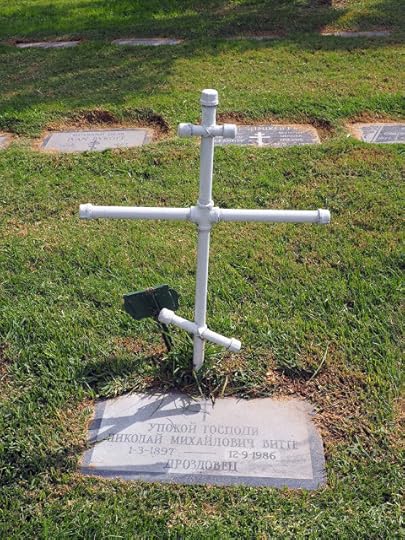
And what about the above remarkably simple and rather moving cross made out of what appears to be plastic irrigation pipe. Is this austerity a deliberate rejection of the extravagance all around it? Was the loved one a gardener, a plumber? Russian speaking readers may be able to tell me.

Hollywood Forever is divided into a series of areas, mostly designated as "gardens." There’s the Garden of Memory, the Garden of Eternal Love, the Chandler Garden (no, not Raymond).

And for headliners, there’s the Garden of Legends, that’s where Johnny Ramone is, and fame being the fleeting thing it is, some of the people buried there are now very obscure, so even having been a legend doesn’t necessarily mean a big memorial. Here for example is the headstone of Virginia Rappe, complete with tribute footwear:

Poor Virginia really never got a break, a small-time actress and model, chiefly famous for the circumstances in which she died – of a ruptured bladder and peritonitis after attending a Fatty Arbuckle party. So you can perhaps understand why the grave is modest.
On first inspection it looks as though Jayne Mansfield’s headstone is equally modest too.
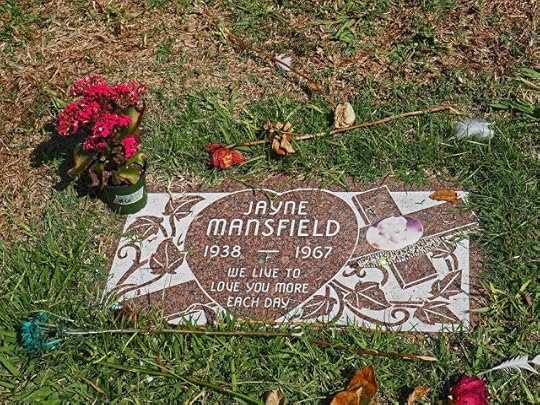
And I thought there was something appealing about this, that if you’ve led a gaudy life, then it’s only appropriate to have a quiet, dignified headstone. But I was wrong. I discover that the stone in Hollywood Forever is just a stone. Jayne Mansfield is actually buried in Pennsylvania in a grave with a huge, heart-shaped headstone.

When I first when to Hollywood Forever, a long time ago now, I was amazed to see peacocks strutting about the place, but the time before last time when I went there I didn’t see any at all. I feared they might be gone, but no, I did see one this time, and also a peahen.
I also saw, and maybe they were there all along and I never spotted them before, a colony of cats. I saw half a dozen though there could easily be more. They look vaguely feral, although more relaxed and less skittish than most feral cats. Clearly somebody’s feeding and sheltering them, possibly the same people who feed the peacocks.
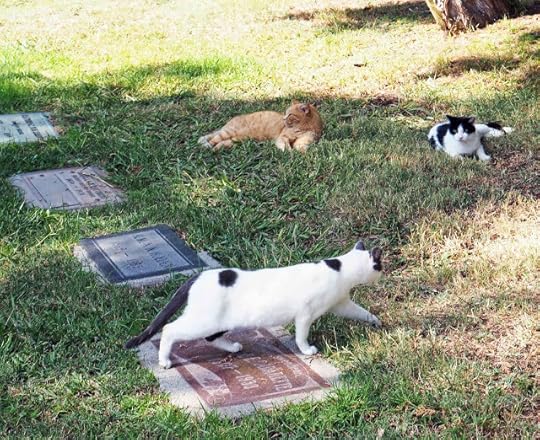
To be honest I’m not sure I’ll ever have a grave of my own, and if I do it almost certainly won’t be in Hollywood Forever, but if I did, I think I should be very happy to have it surrounded and walked on by graveyards cats.

Published on October 23, 2017 13:23
October 21, 2017
THE MAN OUT OF THE CROWD
Cat owners walking to, or possibly from, auditions for the Corman/Poe movie Tales of Terror, c. 1962.
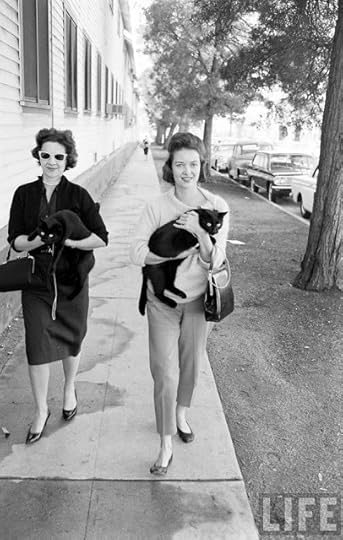
Poe Walking High Bridge, B. J. Rosenmeyer, c. 1930
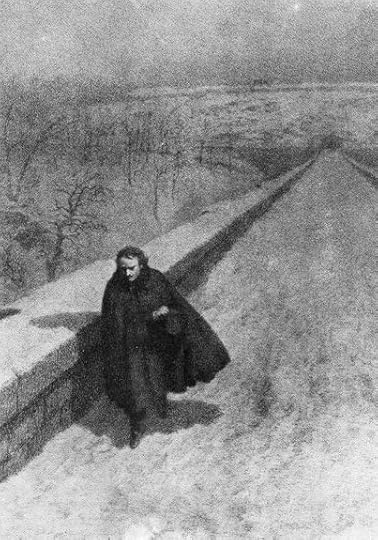


Poe Walking High Bridge, B. J. Rosenmeyer, c. 1930


Published on October 21, 2017 10:29
October 18, 2017
SUSPICIOUS MINDS
We’ve talked before about trap streets – fake locations that cartographers put on their maps so that if somebody else reuses the map and claims it as their own, then it’s obvious where it came from. The culprits can then be hounded down and prosecuted for copyright theft. Trap streets have figured in a Dr Who series and a China Mieville novel.
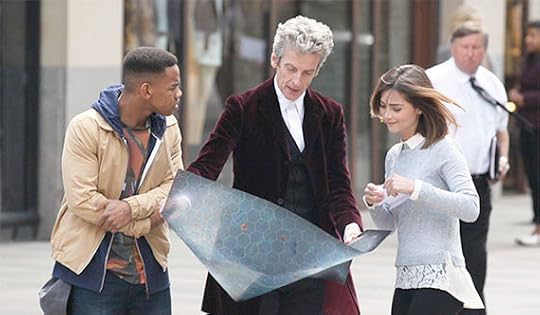
Prosecutions seem to be incredibly rare. True, in 2001 the British Automobile Association paid £20 million to Ordnance Survey because they’d been misusing O.S. maps, but they weren’t caught by trap streets, rather by cartographic “fingerprints” of distinctive design elements.
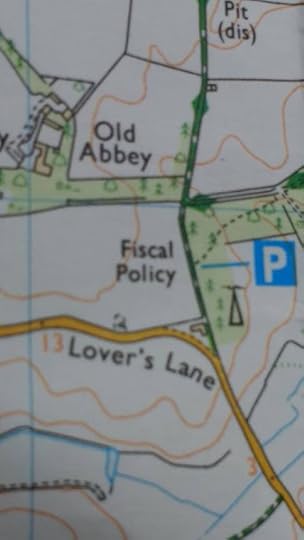
A little while back I found, posted by a Facebook Psychogeography group, the above image of what may or may not be a trap, though it’s a place rather than a street. It’s on an O.S. map and apparently refers to a field in Suffolk. The only Lover’s Lane in Suffolk that I can find on Google maps is in Leiston, site of the Household Waste Recycling Center.
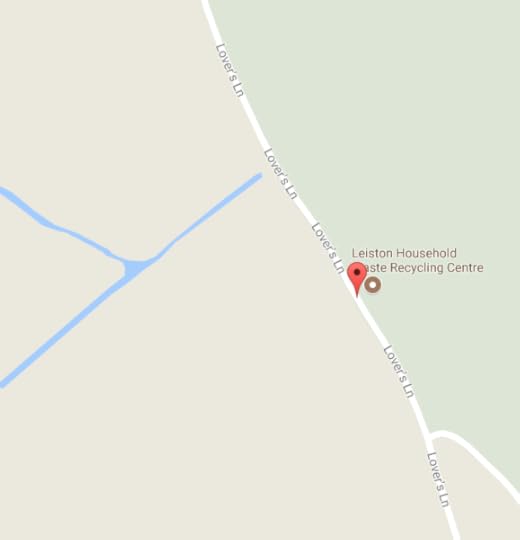
Now, life being as it is, I used to live fairly close to Leiston, walked there from time to time, and I still own a copy of O.S. Pathfinder 987 Leiston, and a good look at the map reveals this same Fiscal Policy, right on the fold. The map is copyright 1983, and there’s no indication that it’s been updated.


Since it’s not a street, there’s some speculation that it might be an Argleton – the name given to phantom settlements that appear on Google maps. However, although a look at Google maps and Google satellite images locates Lover’s Lane, and the other features, thereby confirming that this is the right place, there’s no sign of Fiscal Policy. Go pick the cartographical gristle out of that one.
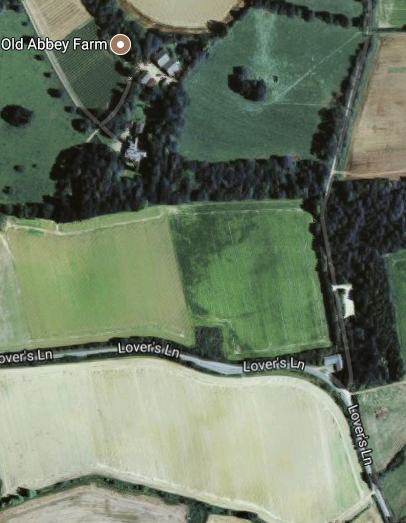
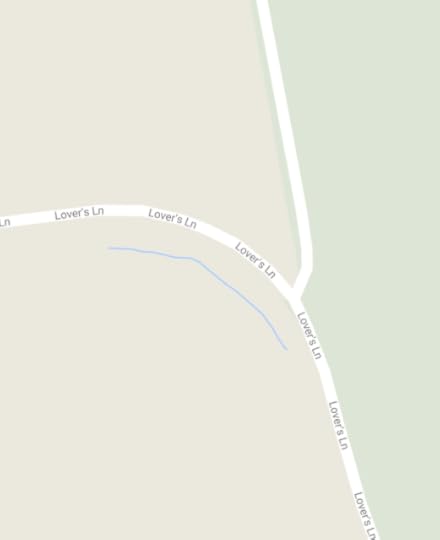
Need I say that in the days when I walked in and around Leiston, I never noticed the name Fiscal Policy on the map I often carried. If I had done, I’d have been off like a shot looking for it.
In one sense, I suppose I’d never have found it.
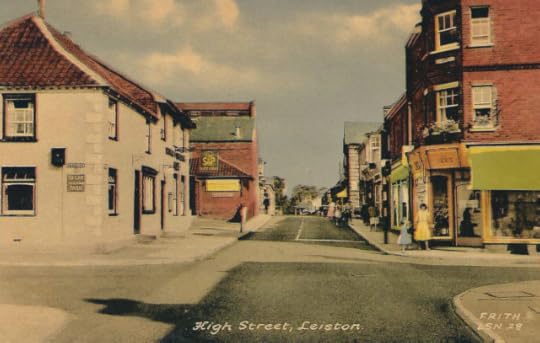


Prosecutions seem to be incredibly rare. True, in 2001 the British Automobile Association paid £20 million to Ordnance Survey because they’d been misusing O.S. maps, but they weren’t caught by trap streets, rather by cartographic “fingerprints” of distinctive design elements.

A little while back I found, posted by a Facebook Psychogeography group, the above image of what may or may not be a trap, though it’s a place rather than a street. It’s on an O.S. map and apparently refers to a field in Suffolk. The only Lover’s Lane in Suffolk that I can find on Google maps is in Leiston, site of the Household Waste Recycling Center.

Now, life being as it is, I used to live fairly close to Leiston, walked there from time to time, and I still own a copy of O.S. Pathfinder 987 Leiston, and a good look at the map reveals this same Fiscal Policy, right on the fold. The map is copyright 1983, and there’s no indication that it’s been updated.


Since it’s not a street, there’s some speculation that it might be an Argleton – the name given to phantom settlements that appear on Google maps. However, although a look at Google maps and Google satellite images locates Lover’s Lane, and the other features, thereby confirming that this is the right place, there’s no sign of Fiscal Policy. Go pick the cartographical gristle out of that one.


Need I say that in the days when I walked in and around Leiston, I never noticed the name Fiscal Policy on the map I often carried. If I had done, I’d have been off like a shot looking for it.
In one sense, I suppose I’d never have found it.


Published on October 18, 2017 19:52
October 16, 2017
THE WALKING STATUE WALK

Statues are peculiar things aren’t they? All this perfectly reasonable (though not always strictly rational) debate about Confederate monuments and statues of Christopher Columbus in America has got us all thinking. At the very least it reinforces the fairly obvious notion that statues are usually erected (and then sometimes demolished) in the name of some ideology or other. There’s no such thing as a value-free statue. Anybody who’s praised by one set of people is likely to be condemned by another set.
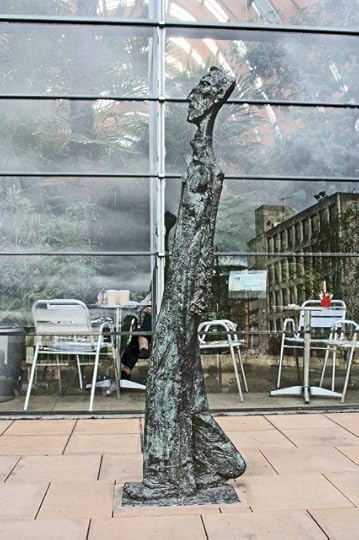
One of my favorite and most blameless statues is the fellow above, The Walking Man, by George Fuller, a statue in my home town of Sheffield, England. It dates from 1957, though I only became aware of it in the 1980s.
I’m not sure which city in the world has the most statues, but I’d think London has a pretty good claim, and the fact is most Londoners walk around without really noticing most of them. Sure, we know that’s Nelson up on the top of his column and we know that Peter Pan has a statue in Kensington Gardens, and there are various kings and queens are all over the place, but we don’t really pay much attention.
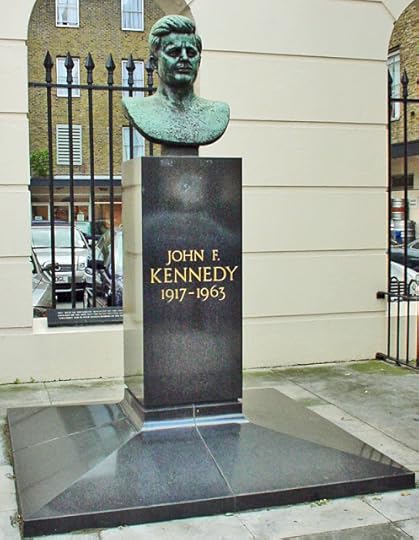
Remarkably few Londoners I’ve talked to were aware of the bust of JFK on Marylebone Road, which was paid for by Sunday Telegraph readers apparently. It was recenty vandalized, and I wonder what its future is, and equally I don’t know if the vandalism was the result of anti-Americanism or just a night on the piss
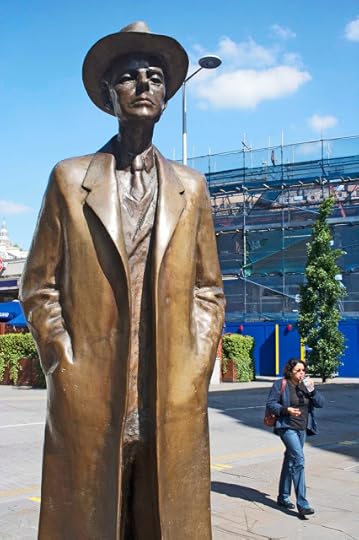
There’s a fine statue of Bela Bartok near South Kensington tube. Bartok lived a blameless life as far as I know, though I suspect not many people wandering the streets of South Ken know his music or would like it much if they did. Bartok first stayed in the area in 1882: the statue was originally erected in a different location in 2004, some 60 years after Bartok’s death.So yes, by definition statues tend to be backward looking and conservative with a small c. You want their significance to last a while. Here is Los Angeles we try to jazz things up a bit, and arguably the sense of history is short. There’s a statue of Bruce Lee in Chinatown.
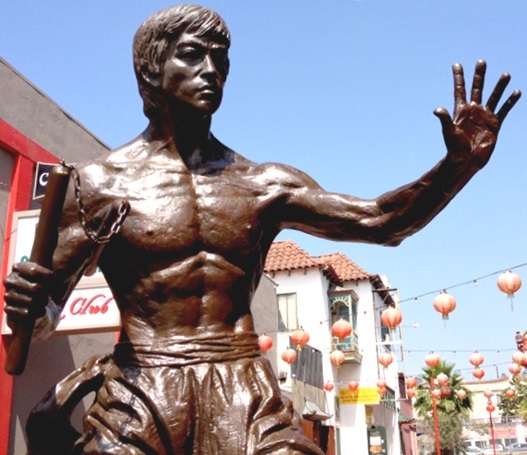
James Dean, up by the Griffith Park Observatory,

Rocky and Bullwinkle on Sunset Strip:

And, for a time there was this statue of Elvis Presley outside a store on Hollywood Boulevard.

But this is a mass-produced statue, one you can buy. Here’s a doppelgänger in situ in Great Yarmouth, in East Anglia.
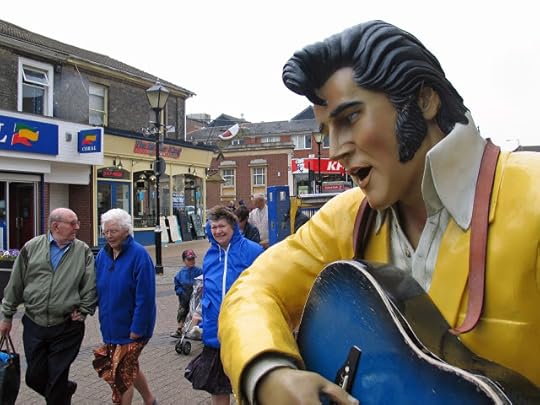
And so t’other day I was walking in the edgelands of Beverly Hills and I came across this memorial to General Don Jose de San Martin, who I admit is not exactly an open book to me:
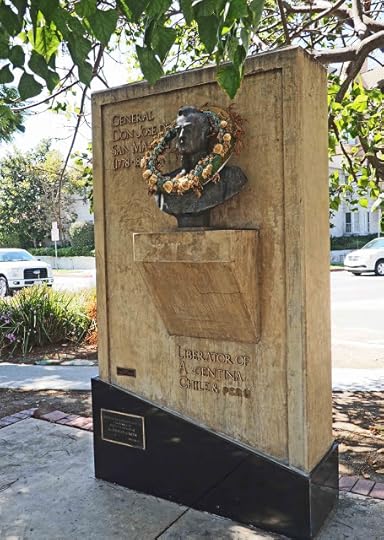

And of course that’s another aspect of statuary: the ignorant can get a sort of education from statues. As you see, he was the liberator of Argentina, Chile and Peru, though Peru does look like a bit of an afterthought, at least on the part of the memorial-maker.

And best of all, around the back of the memorial there’s this somehow very wonderful map of South America. You aren’t here.


Published on October 16, 2017 17:00
October 9, 2017
THE HINDU SPEAKS WELL OF ME (THE HINDU IS THE NAME OF THE WEBSITE, NOT A DESCRIPTION OF THE AUTHOR)
A walk to remember
Preeti Zachariah OCTOBER 09, 2017 12:31 ISTUPDATED: OCTOBER 09, 2017 12:31 IST

Taking mind and body on a long, long walk through the woods
I’m glad that Charles Dickens didn’t own a Fitbit. He would have probably put us so-called “active” types to shame. On an average, the man used to walk 20 miles a day, meandering through the streets of London and plodding through the Kent countryside with equal aplomb. “No gipsy on earth is a greater vagabond than myself; it is so natural to me and strong with me, that I think I must be the descendent, at no great distance, of some irreclaimable tramp,” he writes in his series of semi-autobiographical essays, The Uncommercial Traveller.Exploring the world by shank’s mare seems to be a popular pastime of many a writer. Think William Blake, William Wordsworth, Henry David Thoreau, Virginia Woolf, George Orwell, Henry Miller and Vladimir Nabokov. Perhaps it is because, as Geoff Nicholson, author of The Lost Art of Walking, says, “Walking requires a certain amount of attention but it leaves great parts of the time open to thinking. I do believe once you get the blood flowing through the brain it does start working more creatively.”Of course, my own tryst with walking started off with more prosaic intentions: weight-loss. It is probably the best form of exercise for someone who has a lot of weight to lose. It’s accessible, cheap, fairly easy on already-stressed-by-excess-weight joints and less intimidating than a gym or a class. Today, I fight with brawny men for barbells, lie askew on the gym floor unmindful of whether my (not flat) tummy shows or not and emit guttural, slightly-orgasmic sounds on my final rep. But when I started, I was uncomfortable in my skin, hated my body and was terribly shy, so walking was ideal for me.As the weight came off, I graduated to other things. The gym, of course, but also yoga, boot camps, running, martial arts, swimming, Zumba, aerobics and parkour. Walking got relegated to the back burnerSure, I walked and explored new cities when I travelled or had the occasional walk-date or resorted to it when I had no access to any other form of activity, but it was no longer “cool” enough to count for exercise. Why would I want to walk when I could upload pictures on Facebook wearing a running bib, lifting a massive barbell or in some magnificent, gravity-defying yoga pose?An injury last month changed all that. The only thing I was allowed to do was walk, so, walk I did. This was a temporary thing, I told myself. I would be back in the gym soon. Or so I thought. What I didn’t factor in was falling in love with it.For starters, I get to choose the music echoing through the chambers of my mind, as I walk. Which means no more snazzy, gym workout tracks of the Hips Don’t Lie genre but my music. My friends laugh when I tell them I walk to Andrew Lloyd Webber, Leonard Cohen, The Beatles, Frank Sinatra, Billy Joel, Joan Baez, Jethro Tull, Harry Belafonte and Pete Seeger, but I find it deeply therapeutic. This music, that holds nostalgia-braised memories of great happiness, allows me to escape into myself. I’m mentally in a better place when I walk.And guess what, fitness-wise, walking is pretty legit. Walking is LISS (Low Intensity Steady State Cardio) and while it doesn’t torch fat the way HIIT (Hight Intensity Interval Training) does, is fairly popular among trainers like Kayla Itsines, Joanna Hall and Bob Greene. On her website, Itsines notes that since LISS is“unlikely to impede your recovery by training over the top of sore muscles, “it can “actually help to increase blood flow to damaged muscles and reduce post-workout stiffness.”
Like Thoreau, I’m beginning to believe that, “an early morning walk is a blessing for the whole day.” It has been so far. And so, I intend to, as another fine gentleman once said, "keep walking".
http://www.thehindu.com/opinion/op-ed/a-walk-to-remember/article19827614.ece
Preeti Zachariah OCTOBER 09, 2017 12:31 ISTUPDATED: OCTOBER 09, 2017 12:31 IST

Taking mind and body on a long, long walk through the woods
I’m glad that Charles Dickens didn’t own a Fitbit. He would have probably put us so-called “active” types to shame. On an average, the man used to walk 20 miles a day, meandering through the streets of London and plodding through the Kent countryside with equal aplomb. “No gipsy on earth is a greater vagabond than myself; it is so natural to me and strong with me, that I think I must be the descendent, at no great distance, of some irreclaimable tramp,” he writes in his series of semi-autobiographical essays, The Uncommercial Traveller.Exploring the world by shank’s mare seems to be a popular pastime of many a writer. Think William Blake, William Wordsworth, Henry David Thoreau, Virginia Woolf, George Orwell, Henry Miller and Vladimir Nabokov. Perhaps it is because, as Geoff Nicholson, author of The Lost Art of Walking, says, “Walking requires a certain amount of attention but it leaves great parts of the time open to thinking. I do believe once you get the blood flowing through the brain it does start working more creatively.”Of course, my own tryst with walking started off with more prosaic intentions: weight-loss. It is probably the best form of exercise for someone who has a lot of weight to lose. It’s accessible, cheap, fairly easy on already-stressed-by-excess-weight joints and less intimidating than a gym or a class. Today, I fight with brawny men for barbells, lie askew on the gym floor unmindful of whether my (not flat) tummy shows or not and emit guttural, slightly-orgasmic sounds on my final rep. But when I started, I was uncomfortable in my skin, hated my body and was terribly shy, so walking was ideal for me.As the weight came off, I graduated to other things. The gym, of course, but also yoga, boot camps, running, martial arts, swimming, Zumba, aerobics and parkour. Walking got relegated to the back burnerSure, I walked and explored new cities when I travelled or had the occasional walk-date or resorted to it when I had no access to any other form of activity, but it was no longer “cool” enough to count for exercise. Why would I want to walk when I could upload pictures on Facebook wearing a running bib, lifting a massive barbell or in some magnificent, gravity-defying yoga pose?An injury last month changed all that. The only thing I was allowed to do was walk, so, walk I did. This was a temporary thing, I told myself. I would be back in the gym soon. Or so I thought. What I didn’t factor in was falling in love with it.For starters, I get to choose the music echoing through the chambers of my mind, as I walk. Which means no more snazzy, gym workout tracks of the Hips Don’t Lie genre but my music. My friends laugh when I tell them I walk to Andrew Lloyd Webber, Leonard Cohen, The Beatles, Frank Sinatra, Billy Joel, Joan Baez, Jethro Tull, Harry Belafonte and Pete Seeger, but I find it deeply therapeutic. This music, that holds nostalgia-braised memories of great happiness, allows me to escape into myself. I’m mentally in a better place when I walk.And guess what, fitness-wise, walking is pretty legit. Walking is LISS (Low Intensity Steady State Cardio) and while it doesn’t torch fat the way HIIT (Hight Intensity Interval Training) does, is fairly popular among trainers like Kayla Itsines, Joanna Hall and Bob Greene. On her website, Itsines notes that since LISS is“unlikely to impede your recovery by training over the top of sore muscles, “it can “actually help to increase blood flow to damaged muscles and reduce post-workout stiffness.”
Like Thoreau, I’m beginning to believe that, “an early morning walk is a blessing for the whole day.” It has been so far. And so, I intend to, as another fine gentleman once said, "keep walking".
http://www.thehindu.com/opinion/op-ed/a-walk-to-remember/article19827614.ece

Published on October 09, 2017 12:48
October 8, 2017
IT'S A WRAP
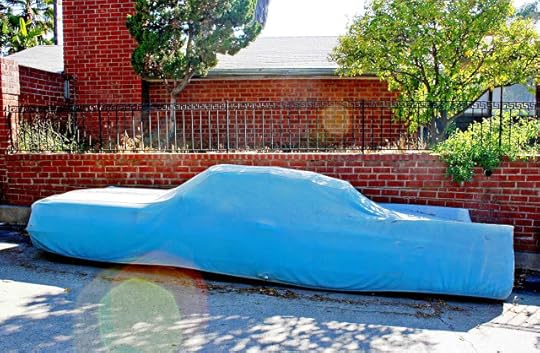
And on the subject of looking at cars while walking, I remembered something somewhere in Kingsley Amis, in a letter to Larkin I think, where he defines a bore as someone who “when he sees an unusual car in the street GOES OVER AND HAS A LOOK AT IT.” Well, just one more thing to disagree about with Kingsley Amis.

So I wonder how he’d have felt about wrapped cars. It’s not specifically a Los Angeles thing, the English do it too. This one was in Suffolk:

This one in Essex:

But LA seems to contain a higher number than anywhere I’ve ever been. I suppose it protects cars from passing vandals, and I think from the burning sun. Only the first of these is a problem in England.

You assume there must be a really nice care under the wrapping, something worth protecting, but you can never be completely sure:

If you’re enough of a motorhead I dare say you can always tell what’s under wraps, and some are obviously much easier than others. VW Beetles are especially easy to spot:
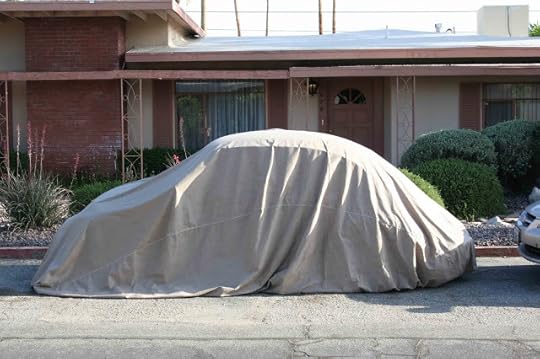
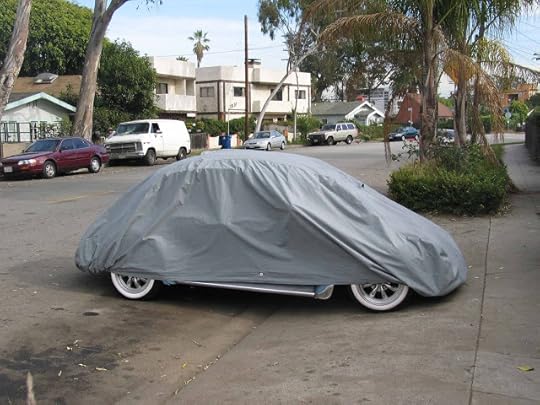
And you know, aesthete that I am, when I see wrapped cars I’m often reminded of the bondage photographs of Araki:

And more often of Christo – like this:

And this:
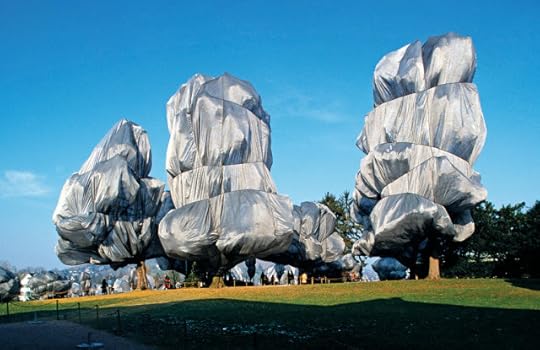
But then, wouldn’t you know it, I found this picture; a Beetle wrapped by Christo himself – well worth going over and having a look, I’d have said.
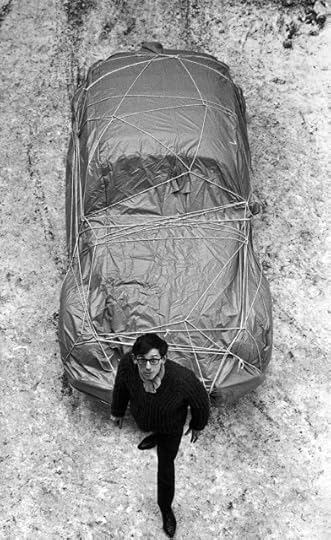

Published on October 08, 2017 07:54
October 1, 2017
THE AUTO WALK
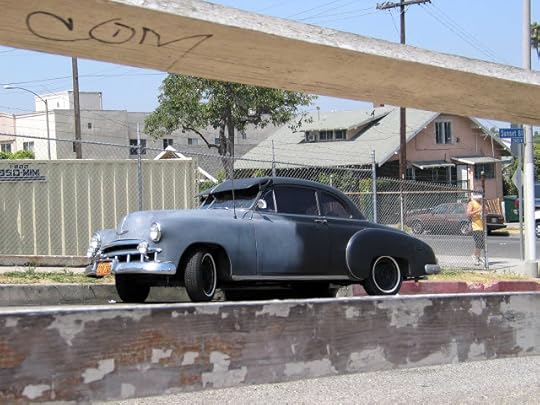
I know that a lot of walkers think it’s their duty to hate automobiles, but I’m not one of them. I like looking at cars when I'm walking. Ten years or so ago when I first started living and walking in Los Angeles it seemed there was an amazing classic car, or piece of wonderful automotive junk, on every block, and I found them incredibly cheering. I took a few photographs at the time, but now I wish I’d taken more.
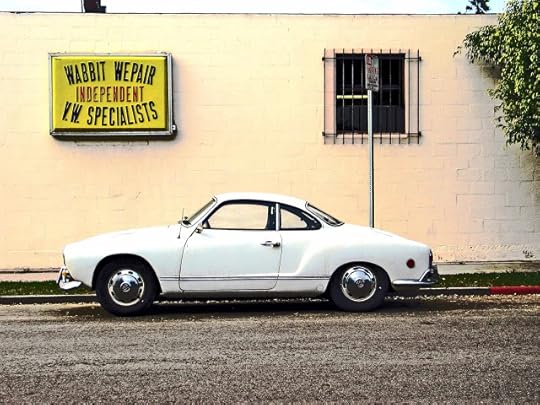
The situation’s changed a lot while I’ve been here. Cool cars are much rarer. I assume many of them have been scrapped because they’re just not up to the rigors of L.A. driving anymore. A few endure but they’re part of a dying breed, although all the more attractive for that reason.

I’ve always been skeptical about this whole “the car you drive expresses your personality” thing, but in the end, one way or another, I guess it does, whether you want it to or not. And of course one way you can further express your personality, if you have one, is to put a sticker on the bumper or the back window of your car. Religion, sports teams, political affiliations, are the obvious things to announce to the world, but some are more enigmatic than that.

This one’s suitably literary:
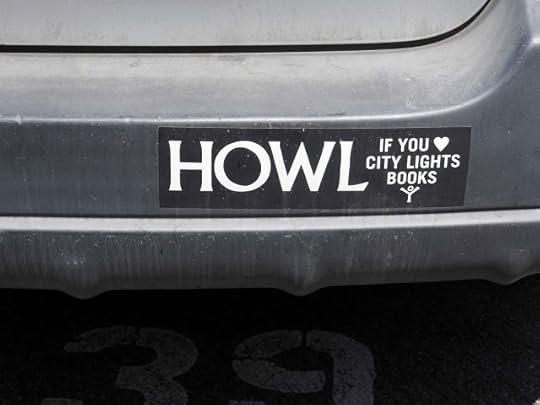
This shows a love for country, though not America:

This one shows a possibly, though not necessarily, ironic love for both Benjamin Franklin and Kiss.
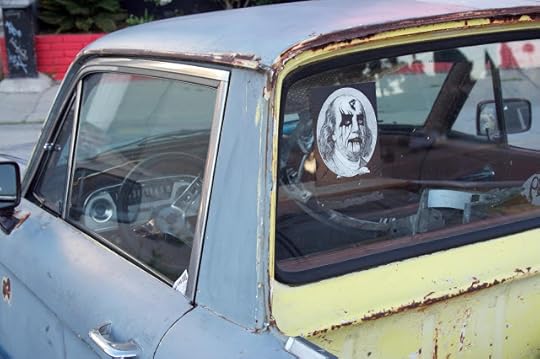
And I think this one is great, though I could be wrong:


Published on October 01, 2017 08:57
Geoff Nicholson's Blog
- Geoff Nicholson's profile
- 55 followers
Geoff Nicholson isn't a Goodreads Author
(yet),
but they
do have a blog,
so here are some recent posts imported from
their feed.



